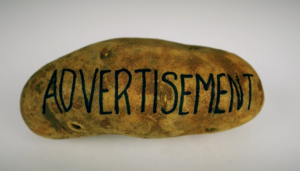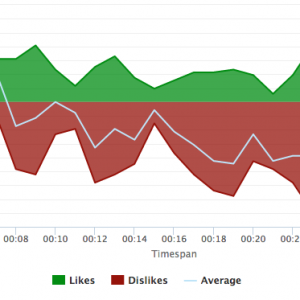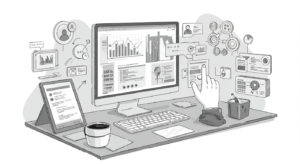The How To’s of Market Research: A Guide and Template
Consumers today have a great deal of power. They can independently analyze your product or service and make purchasing judgments. Furthermore, rather than speaking with one of your sales representatives, they are more likely to seek referrals from friends and family or read internet evaluations.
Given their power, have you adjusted your marketing plan to reflect how today’s consumers conduct research, shop, and buy? To do so, you’ll need marketing surveys to gain a thorough understanding of who your consumers are, your target market, and the factors that impact their purchasing decisions and behavior.
You may meet your buyer where they are by conducting market research. This becomes increasingly valuable when our world (both digital and analog) becomes noisier and demands more of our attention. You may correctly construct your product or service to organically appeal to your buyer by understanding their challenges, pain points, and desired answers.
Types of Market Research
1. Interviews
Interviews enable in-person and virtual face-to-face discussions, allowing you to maintain a natural flow of dialogue while keeping an eye on your interviewee’s body language.
2. Focus Groups
Focus groups give you a small group of carefully chosen people to test your product, watch a demo, provide feedback, and answer particular questions.
3. Product/ Service Use Research
Product or service usage research can reveal how and why your target customer uses your product or service, as well as specific characteristics. This form of market research can also help you determine whether or not a product or service is appropriate for your target audience.
4. Observation-Based Research
Observation-based research allows you to sit back and observe how your target audience members use your product or service. You can also determine what works well in terms of user experience, what blockages they encounter, and which components of it may be made easier for them to use and implement.
5. Buyer Persona Research
Buyer persona research offers you a realistic picture of your target client, what issues they face, why they desire your product or service, what they require from your company and brand, and more.
6. Market Segmentation Research
Market segmentation research helps you to divide your target audience into distinct groups (or segments) based on specific and distinguishing criteria, allowing you to understand their wants, pain points better, and expectations, as well as learn about their aspirations.
7. Pricing Research
Pricing research will show you what similar items or services in your market sell for, what your target audience expects to pay— and is willing to pay— for whatever you sell, and what is a reasonable price for you to offer your product or service at. All of this data will assist you in determining your pricing approach.
8. Competitive Analysis Research
Competitive analyses are beneficial since they provide you with a thorough grasp of your market and the industry’s competition. For example, you may learn about what’s working in your business, what your target audience is looking for in terms of similar items to yours, which of your competitors you should seek to keep up with and outperform, and how you can stand out from the crowd.
9. Customer Satisfaction and Loyalty Research
Customer satisfaction and loyalty research will help you figure out how to encourage current customers to do more business with you and what will encourage them to do so (e.g., loyalty programs, rewards, remarkable customer service). In addition, this study will assist you in determining the most efficient methods for promoting customer satisfaction.
10. Brand Awareness Research
What your target audience knows about and recognizes from your brand is determined through brand awareness research. It reveals the connections your audience members create when they consider your company and what they believe you’re all about.
11. Campaign Research
Campaign research comprises reviewing and analyzing previous campaigns’ success among your target population and current clients. It takes trial and error, followed by a deep dive into what reached and connected with your target audience so you can keep those things in mind for future campaigns and focus on the components of what you do that are most important to them.
Market Research Report Template
1. Five Forces Analysis Template
Use Porter’s Five Forces Model to gain a better understanding of the industry by examining five different criteria and determining how strong the strength, threat, or rivalry is in each one. Here are the five criteria:
- Rivalry between competitors
- Threats of potential entrants
- Substitutional threat
- Buyer Power
- Supplier Power
2. SWOT Analysis Template
Within the market, a SWOT (Strengths, Weaknesses, Opportunities, Threats) analysis examines your internal strengths and weaknesses, as well as exterior opportunities and threats. In addition, a SWOT analysis identifies specific areas of potential for your firm to pursue, develop, focus on, and overcome.
3. Market Survey Template
Both market surveys and focus groups can help you learn more about your buyer profiles, target audience, current customers, market, competition, and other topics (e.g., demand for your product or service, potential pricing, impressions of your branding, etc.).
A range of survey question formats, such as multiple-choice, rankings, and open-ended responses, should be included in surveys. To reduce time and make it easier to draw conclusions, ask quantitative and short-answer questions. Save the longer questions for your focus groups, as they will require more extensive responses.
4. Focus Group Template
Focus groups allow you to gather in-depth, qualitative information from genuine consumers or members of your target demographic. It would be best if you ask open-ended questions to your focus group participants. Keep the following suggestions in mind when doing so:
- Set a limit on how many questions you ask (they are, after all, open-ended).
- Provide a prototype or a demonstration to attendees.
- Inquire about the attendees’ reactions to your price.
- Inquire about your competition among the participants.
- Allow time at the end of the session for participants to share any last thoughts, questions, or concerns.
Final Thoughts
Conducting market research may be a thrilling experience. But, even if you believe you have a good understanding of your customers, taking the study will most likely reveal new channels and messaging recommendations to help you better your interactions.








